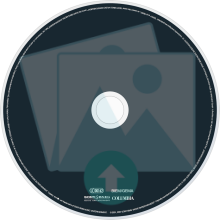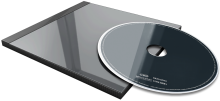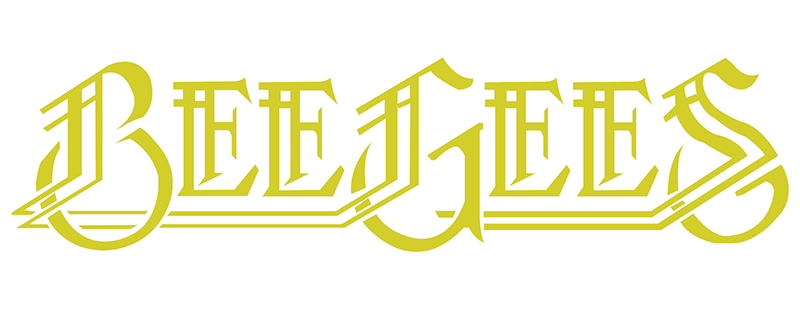Track List
01) Spicks & Specks
02) Follow the Wind
03) Every Day I Have to Cry
04) Wine and Woman
05) I Was a Lover (Leader of Men)
06) I Am the World
07) Playdown
08) I Don't Know Why I Bother With Myself
09) To Be or Not to Be
10) Second Hand People
11) Claustrophobia
12) Take Hold of That Star
13) Could It Be That I'm in Love With You
14) Peace of Mind
15) Three Kisses of Love
16) How Love Was True
01) Spicks & Specks
02) Follow the Wind
03) Every Day I Have to Cry
04) Wine and Woman
05) I Was a Lover (Leader of Men)
06) I Am the World
07) Playdown
08) I Don't Know Why I Bother With Myself
09) To Be or Not to Be
10) Second Hand People
11) Claustrophobia
12) Take Hold of That Star
13) Could It Be That I'm in Love With You
14) Peace of Mind
15) Three Kisses of Love
16) How Love Was True
2:54
2:17
2:14
2:57
3:39
2:40
2:54
2:45
2:20
2:04
2:33
3:01
2:20
2:25
2:04
2:22
Data Complete 80%
Total Rating
Total Rating
Back Cover![]()
CD Art
3D Case
3D Thumb
3D Flat
3D Face
3D Spine
First Released
![]() 1966
1966
![]() Disco
Disco
![]() ---
---
![]() ---
---
![]() ---
---
![]() Medium
Medium
![]() Album
Album
![]() 0 copies
0 copies
Album Description
Available in:
Spicks and Specks is the second studio album by the Bee Gees. It was released in November 1966, on Spin. Primarily written by Barry Gibb, the album includes the first Robin Gibb composition "I Don't Know Why I Bother With Myself" and a Maurice Gibb composition "Where Are You".
Unlike the previous album The Bee Gees Sing and Play 14 Barry Gibb Songs, which had only contained three songs that had not previously appeared on singles and thus functioned more as a compilation, Spicks and Specks was an album of original songs.
In 1968, US ATCO and UK Polydor, under contract from Festival, reissued this album, re-sequenced, as Rare, Precious and Beautiful.
History and recording
Nat Kipner brought the Bee Gees to St. Clair Studio, Hurstville (in Sydney's southern suburbs). It was a small place behind a butcher's shop in a strip shopping centre, owned and operated by Kipner's friend Ossie Byrne, a sound engineer who was working wonders with even more modest facilities than Festival Studios. Both Kipner and Barry Gibb recall that the recording equipment was just two one-track tape decks and a mixer. But many Festival acts would make the trip to Hurstville to get the benefit of Byrne's talents and the more relaxed artist-oriented atmosphere. Among them was the band Steve and the Board, led by Kipner's son, Steve Kipner, all of whom became friends with the Bee Gees because both groups were allowed the run of the studio whenever it was not booked for other performers. The Bee Gees had never had much studio time before. Byrne let them experiment with sound effects and overdubs, while Kipner gave them plenty of feedback on their music.
On some tracks, the drums were played by Colin Petersen from Steve and the Board, who would later be the Bee Gees' regular drummer until August 1969. Maurice Gibb had a piano to play and electronics he was allowed to try out, Robin Gibb learned to double-track his voice, and Barry had precious time to work with his group to make recordings as good as those by the other performers who had recorded so many of his songs. The one-track tape machines required the used of sound-on-sound for all overdubs. An instrumental base track was recorded first. Then it was played back while the group sang or played, and the playback and microphones were mixed together and recorded to another tape machine. If an additional track was needed, the process could be repeated. Each track however added another layer of tape hiss. Some of these recordings must have gone to at least a third track. The exact chronology of the St. Clair sessions remains a mystery, one that will not be solved since the studio documentation is long gone. The two songs for "Monday's Rain" single were certainly recorded by 8 May 1966, based on a press report.
The album's initial title was Monday's Rain and a very small number of albums was actually manufactured with this name. After the single "Spicks and Specks" became a national hit record, the album was renamed as "Spicks and Specks", with this song replacing "All of My Life" as the first song of side two.

User Album Review
None...
External Album Reviews
None...
User Comments


Available in:
Spicks and Specks is the second studio album by the Bee Gees. It was released in November 1966, on Spin. Primarily written by Barry Gibb, the album includes the first Robin Gibb composition "I Don't Know Why I Bother With Myself" and a Maurice Gibb composition "Where Are You".
Unlike the previous album The Bee Gees Sing and Play 14 Barry Gibb Songs, which had only contained three songs that had not previously appeared on singles and thus functioned more as a compilation, Spicks and Specks was an album of original songs.
In 1968, US ATCO and UK Polydor, under contract from Festival, reissued this album, re-sequenced, as Rare, Precious and Beautiful.
History and recording
Nat Kipner brought the Bee Gees to St. Clair Studio, Hurstville (in Sydney's southern suburbs). It was a small place behind a butcher's shop in a strip shopping centre, owned and operated by Kipner's friend Ossie Byrne, a sound engineer who was working wonders with even more modest facilities than Festival Studios. Both Kipner and Barry Gibb recall that the recording equipment was just two one-track tape decks and a mixer. But many Festival acts would make the trip to Hurstville to get the benefit of Byrne's talents and the more relaxed artist-oriented atmosphere. Among them was the band Steve and the Board, led by Kipner's son, Steve Kipner, all of whom became friends with the Bee Gees because both groups were allowed the run of the studio whenever it was not booked for other performers. The Bee Gees had never had much studio time before. Byrne let them experiment with sound effects and overdubs, while Kipner gave them plenty of feedback on their music.
On some tracks, the drums were played by Colin Petersen from Steve and the Board, who would later be the Bee Gees' regular drummer until August 1969. Maurice Gibb had a piano to play and electronics he was allowed to try out, Robin Gibb learned to double-track his voice, and Barry had precious time to work with his group to make recordings as good as those by the other performers who had recorded so many of his songs. The one-track tape machines required the used of sound-on-sound for all overdubs. An instrumental base track was recorded first. Then it was played back while the group sang or played, and the playback and microphones were mixed together and recorded to another tape machine. If an additional track was needed, the process could be repeated. Each track however added another layer of tape hiss. Some of these recordings must have gone to at least a third track. The exact chronology of the St. Clair sessions remains a mystery, one that will not be solved since the studio documentation is long gone. The two songs for "Monday's Rain" single were certainly recorded by 8 May 1966, based on a press report.
The album's initial title was Monday's Rain and a very small number of albums was actually manufactured with this name. After the single "Spicks and Specks" became a national hit record, the album was renamed as "Spicks and Specks", with this song replacing "All of My Life" as the first song of side two.
User Album Review
None...
External Album Reviews
None...
User Comments

No comments yet...


